Autumn Leaves (Les feuilles mortes)
___________________________________
page originally published on 5 October, 2010, but periodically revised and often edited since then; latest edit: 3 October 2023
___________________________________
(below, left) Joseph Kosma, Jacques Prévert, (right) Joseph Kosma
(below) Prévert in Paris, 1945
Les feuilles mortes (m. Joseph Kosma, w. Jacques Prévert)
In his article “History and Analysis of ‘Autumn Leaves’,”* Philippe Baudoin says:
“Les feuilles mortes” (literally ‘The Dead Leaves’) was originally a melody composed by Joseph Kosma [2] as a pas de deux (choreographed duo) for the ballet Le Rendez-vous, with a plot by Jacques Prévert. [3] It was introduced by Roland Petit in 1945, without words. The copyright is dated February 27, 1946 and it was first published by Enoch (Paris, France) in 1947.
 The complete original
The complete original lyric, not easily found in online searches, is available at the site Hommage à Jacques Prévert, here: Prévert en musique.** The site’s author indicates that the poems (presumably meaning lyrics as well) included on the website are all extracted from a 1945 collection titled Paroles. See Menu principal for additional lyrics and poems, arranged by category.
___________________
Autumn Leaves, an English-language version with words by Johnny Mercer, was evidently first recorded by Jo Stafford in 1950, although it’s unclear when the lyric was written.
Disagreement on the date of the Johnny Mercer lyric:
- 1947 — Wikipedia says, “The American songwriter Johnny Mercer wrote English lyrics in 1947 and Jo Stafford was among the first to perform this version.”
- 1949 — JazzStandards.com says, “In 1949 Johnny Mercer wrote English lyrics for the tune changing the original French title to Autumn Leaves.” JazzStandards also indicates that Jo Stafford was the first to record the song with the Mercer lyric.
- 1950 — In “History and Analysis of ‘Autumn Leaves’,” Philippe Baudoin says that Mercer wrote the “Autumn Leaves” lyric in 1950, at the request of the head of Capitol’s music publishing department, Michael Goldsen. The story told by Goldsen as quoted in Baudoin’s article suggests the lyric was written in a matter of minutes while Mercer was waiting for a ride to the train station.
___________________
Yves Montand sings “Les feuilles mortes” in the film Les Portes de la nuit (1946)
I presume the first verse, which mentions les feuilles mortes (dead leaves), may have been cut by the video editor of the following clip. Neither Autumn nor leaves are mentioned or referred to in the chorus, or refrain, sung by Montand here, the only metaphor being the tide erasing the footsteps in the sand made by lovers, after they are broken apart. Montand recorded the first verse elsewhere. Most of the recordings of the song up to the early 1960s that I’ve heard incorporate the first verse, including those by Lucille Dumont, c.1950; Juliette Gréco,1951; and Jean-Claude Pascal, 1962. The second verse of the poem (fourth of five sections) is used in no versions of the song that I’m aware of.
.
(below) Jean Vilar, as le clochard “Le Destin” (the tramp named Destiny), plays the tune on harmonica for Yves Montand (Diego).
____________________
Selected recordings of Les feuilles mortes
Cora Vaucaire
From Philippe Baudoin’s webpage “History and Analysis of ‘Autumn Leaves’“:
The premier recording of “Les feuilles mortes” was by French singer Cora Vaucaire (January 1948, Chant-du-Monde) or perhaps by Jacques Douai in 1947…
In his book Jacques Prévert: From Film and Theater to Poetry, Art and Song (2002), Michael Bishop says, on p. 137:
The beautiful voice of Cora Vaucaire is the first, however, to record Les Feuilles mortes, in 1948. It is, of course, a finely arranged composition by Kosma, but Cora Vaucaire’s pacing and range of power, her exquisite articulation, the vibrant intimacy she generates with such naturalness guarantee the magnificent response audiences gave her in live concert performance.
A recording by Vaucaire was one of the earliest, if not the first, to be released. It was issued in (January?) 1948 on the 78 rpm single Le Chant du Monde 1536, b/w “Deux escargots vont à l’enterrement.” The following video claims to contain the “version originale” by Vaucaire, but the date is questionable since, according to rateyourmusic.com (see previous link), the 1948 side was 3:00 in length while the length of the recording in this audio file seems to be about 2:20.
.
Lucienne Delyle — Columbia (France) BF 286, issued in 1949, b/w “Si tu viens danser dans mon village”
- arranged by – Mario Bua
- conductor – Aimé Barelli
- chorus – les Chœurs R. Saint-Paul
.
Dany Dauberson — released in 1949, according to the website “The Originals,” by Arnold Rypens
.
Lucille Dumont — 78 rpm single “Les feuilles mortes” b/w “C’est pas banal,” (Canada) RCA Victor 56-5201, released in 1950
biography:
- Wikipédia (français)
- Québec Info Musique (français)
- The Canadian Encyclopedia (English) — article by Suzanne Thomas, published 07/17/07
recording presently unavailable
________________
Edith Piaf
radio transcription from The Big Show, 24 December 1950
Wikipedia says,
On December 24, 1950, French singer Edith Piaf rendered both French and English versions of this song on the radio program The Big Show, hosted by Tallulah Bankhead.[2]
In the following excerpt from a broadcast transcription, we hear, prior to and after the song, scripted dialogue involving Tallulah Bankhead, Margaret O’Brien & Ed Wynn which may or may not be performed live. The vocal by Piaf might have been performed live, as it sounds slightly different than the undated studio recording in the second video below, but I don’t believe it was because the orchestra behind her and the choral introduction sound like studio product. Alternatively, the dialogue and the song might have each been recorded for the radio program separately and combined later. Compare the first video (with dialogue) to the second (without). Each has choruses sung in two languages, first in English then in French, and finally back to English again.
(below) studio recording, date unknown
.
Juliette Gréco — 1951 recording and selected live performances
1951, avec André Popp et son orchestre
.
live performance — 24 mars 1966 (Ina.fr vidéo)
___________
Berlin — live, 1967
.
live, 28 March 1968
.
16 February 1972 — live at Bobino, Paris (YouTube)
- 16 février 1972 — en direct de Bobino, Paris (Ina.fr vidéo)
.
Jacqueline François avec Paul Durand et son orchestre — 1953(?)
.
Cora Vaucaire — date unknown
.
Lisa Ono — from her 2003 CD Dans Mon Île
____________________
Selected recordings of “Autumn Leaves” (lyric by Johnny Mercer)
Jo Stafford with orchestra conducted by Harold Mooney — recorded on 13 July 1950, according to Second Hand Songs; issued as the A-side of Capitol F1248, b/w “Autumn in New York” (Note: Multiple videos on YouTube presently identify the same recording as that by Jo Stafford with Art Van Damme for the 1957 Columbia album Once Over Lightly. Art Van Damme was an accordionist, and the arrangement of the song for that album was quite different than that of this 1950 recording.
.
Stan Getz Quintet — one of two takes recorded on 19 December 1952 — musicians: Stan Getz (tenor sax), Duke Jordan (piano), Jimmy Raney (guitar), Bill Crow (bass), Frank Isola (drums)
 Getz had participated in his first recording session (in Wichita Falls, TX) at age 16 in 1943 with the Jack Teagarden Orchestra. He led his first session, according to jazzdisco.org, on 31 July 1946 when the Stan Getz Quartet recorded four songs, including And the Angels Swing, and Don’t Worry ‘Bout Me.
Getz had participated in his first recording session (in Wichita Falls, TX) at age 16 in 1943 with the Jack Teagarden Orchestra. He led his first session, according to jazzdisco.org, on 31 July 1946 when the Stan Getz Quartet recorded four songs, including And the Angels Swing, and Don’t Worry ‘Bout Me.
Wikipedia notes his growing status over the next few years:
After playing for Stan Kenton, Jimmy Dorsey, and Benny Goodman, Getz was a soloist with Woody Herman from 1947 to 1949 in ‘The Second Herd’, and he first gained wide attention as one of the band’s saxophonists, who were known collectively as ‘The Four Brothers’, the others being Serge Chaloff, Zoot Sims and Herbie Steward. With Herman, he had a hit with “Early Autumn” and after Getz left ‘The Second Herd’ he was able to launch his solo career. He would be the leader on almost all of his recording sessions after 1950.
_________________
Pages: 1 2










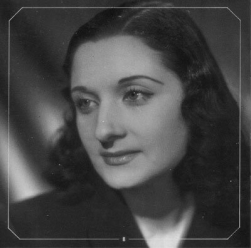








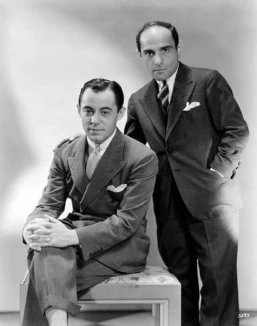

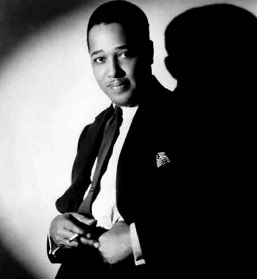


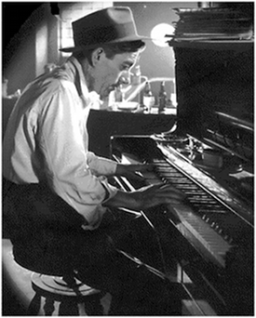
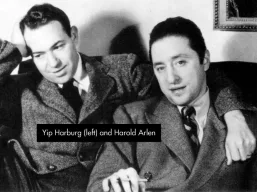




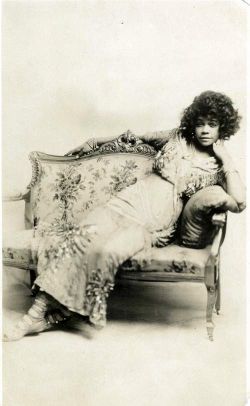










Jun 20, 2011 @ 11:59:16
Merci pour ces merveilleuses interpretations
LikeLiked by 1 person
Aug 14, 2012 @ 22:42:42
This is just fantastic. Thank you so much for your wonderful compilation and collection of knowledge about ‘Les feuilles mortes’. Merci beaucoup!
LikeLiked by 1 person
Aug 14, 2012 @ 23:36:35
Thanks, Karl
I haven’t looked at this page for quite awhile. Looks like January was the last time I was there. Hope it hasn’t got too many disabled videos, yet. The feature was originally created in October 2010, then greatly expanded last Autumn.
LikeLiked by 1 person
Aug 11, 2016 @ 01:51:21
In regards to “Question of originality”, while perhaps not so common in jazz, this piece merely uses the “sequence of falling fifths” which was found in the renaissance era (“Bella pedrina” https://youtu.be/vNM5M9tZnic?t=4m41s), extremely common in the Baroque era (you already mention Handel’s Passacaglia but Handel was merely using the conventional formula for this sequence; see numerous works by Vivaldi, e.g. “Sposa son disprezzata”, “Alma oppressa”, “Gelido in ogni vena”, “Se lento ancor il fulmine” and numerous others; also most concertos, i.e. concerto for 2 violins in A minor [which Bach transcribed for organ]) and of course the romantic era. It is absurd to suppose that Kosma borrowed this sequence specifically from Tchaikovsky or Mozart since he would have been highly familiar with it without knowing those two pieces.
LikeLiked by 1 person
Aug 11, 2016 @ 10:29:13
Jonathan Avidan,
Hi. Thank you for contributing this illuminating information. The supposition that Kosma might have borrowed the progression in question specifically from certain pieces by well-known composers, when he would have certainly been very familiar with it due to its being a conventional formula in classical music with roots going back at least to the Renaissance, may appear absurd to you, but it might not seem so to one less familiar with such formulas, including a particular sequence that may have been ubiquitous in the Baroque era.
While it would not be an exaggeration to describe my unfamiliarity with classical music as profound, I can easily hear, in the sequence of the “Bella pedrina” which you’ve linked to, similarity to the cited Tchaikovsky sequence and to the progression in question in “Les feuilles mortes.” In response, I’ve moved the small section regarding the question of originality previously included in the page content to a comment, and am considering removing it from the page entirely. In the meantime I plan to listen to some of the Vivaldi pieces you’ve mentioned. Thanks again.
Regards,
doc
LikeLike
Aug 11, 2016 @ 09:52:13
Questions of originality:
In the “Talk” section of the Wikipedia article, one commenter argues that “the theme” of Autumn Leaves is in debt to a small section of a work by Tchaikovsky, saying,
Please compare the theme of ‘Autumn Leaves’ with 56 seconds from the ouverture “Hamlet” Op. 67 composed in 1888 by Piotr Ilitch Tchaikovsky; my version of this opus is 21’42” long and the single minute of music to which I refer is placed between the times 7’50” and 8’36” [That’s 46 seconds.] counting from the beginning of the ouverture.
In “History and Analysis of ‘Autumn Leaves’,” Phillippe Baudoin suggests the following two precedents for the chord progression found in the first four-bar section of the first printing* of sheet music for “Les feuilles mortes”:
LikeLike